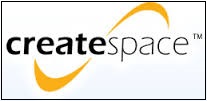In response to some queries I’ve been receiving recently from writers thinking about self publishing, here is an update on the nuts and bolts of what it entails.
Self publishing offers exciting opportunities for writers …
- You get to be in control of everything, including
- When you publish
- What you publish
- The look of the book, including cover design
- The price
… It also entails a certain amount of hard work, but depending on your inclination and your budget you can get other people to do all or some of it for you. Here’s what you need to do:
- Write the best book you can and have it professionally edited and proofread
- Hire a professional cover designer
- Convert the manuscript into ebook for Amazon and other online retailers
- Publish the ebook on Amazon direct, and/or through Smashwords
- Design and publish the paperback
- Market it!
Amazon is the leading online retailer but there are other important outlets as well, including Kobo, Nook and Apple iBooks. It is possible to publish your book on all of them for free.
There is also Ingram Spark. They publish and distribute ebooks and paperbacks globally. The pros and cons of IS are
- Their worldwide distribution is better than Amazon’s
- The quality of paper and print is marginally better than Amazon’s
- You have a better chance of selling your book through retailers who don’t like Amazon
- They have print outlets in the UK and in Australia, as well as the USA
- Unlike Amazon and the rest however you will need your own ISBN. These are available to buy in a minimum of 10 through Neilsen (in the UK).
Marketing your book is a challenge, there’s no doubt about that, and the more writers choose to self publish the harder it is to get anyone to read your book. In my experience non fiction is easier to market than fiction as you can target a specific readership. That said, you can do as little or as much marketing as you like depending on whether you are hoping to make money out of your writing or are just happy to have your book out there.
For more information on the whole process, plus how to find people to help you, please click on https://patsytrench.com//2015/08/16/self-publishing-for-family-historians/
If you are serious about self publishing you might consider joining The Alliance of Independent Authors. They have a private Facebook forum where you can get advice on all aspects of independent publishing, and there are also regular online conferences and physical meetups. Click on the ALLi sidebar on this page to find out more.
Good luck with your indie publishing enterprise, and if you have any questions don’t hesitate to get in touch.
Patsy Trench
[email protected]



